Tracking Multiple Humans
The figures below show the Wi-Vi screen when there are one, two, and three persons moving in a room respectively. Each of the graphs always has a line at "zero" which corresponds to the residual DC (static objects). In addition to the zero line, the left-most window tracks one moving human indicated by the bright curved line other than the zero line. In contrast, the middle window tracks two moving humans; and the third tracks three moving humans indicated by the disconnected bright curves.
| One Moving Person | Two Moving Persons | Three Moving Persons |
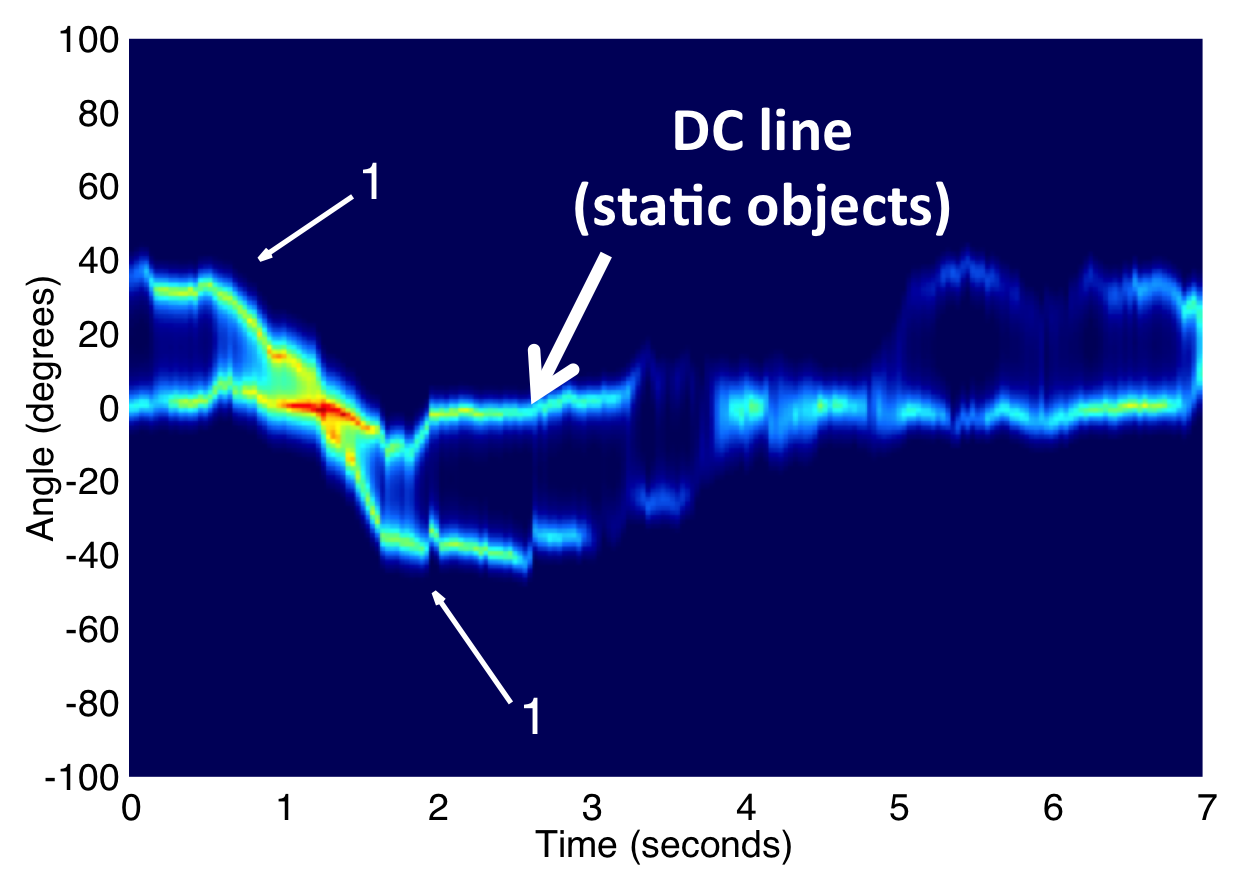 |
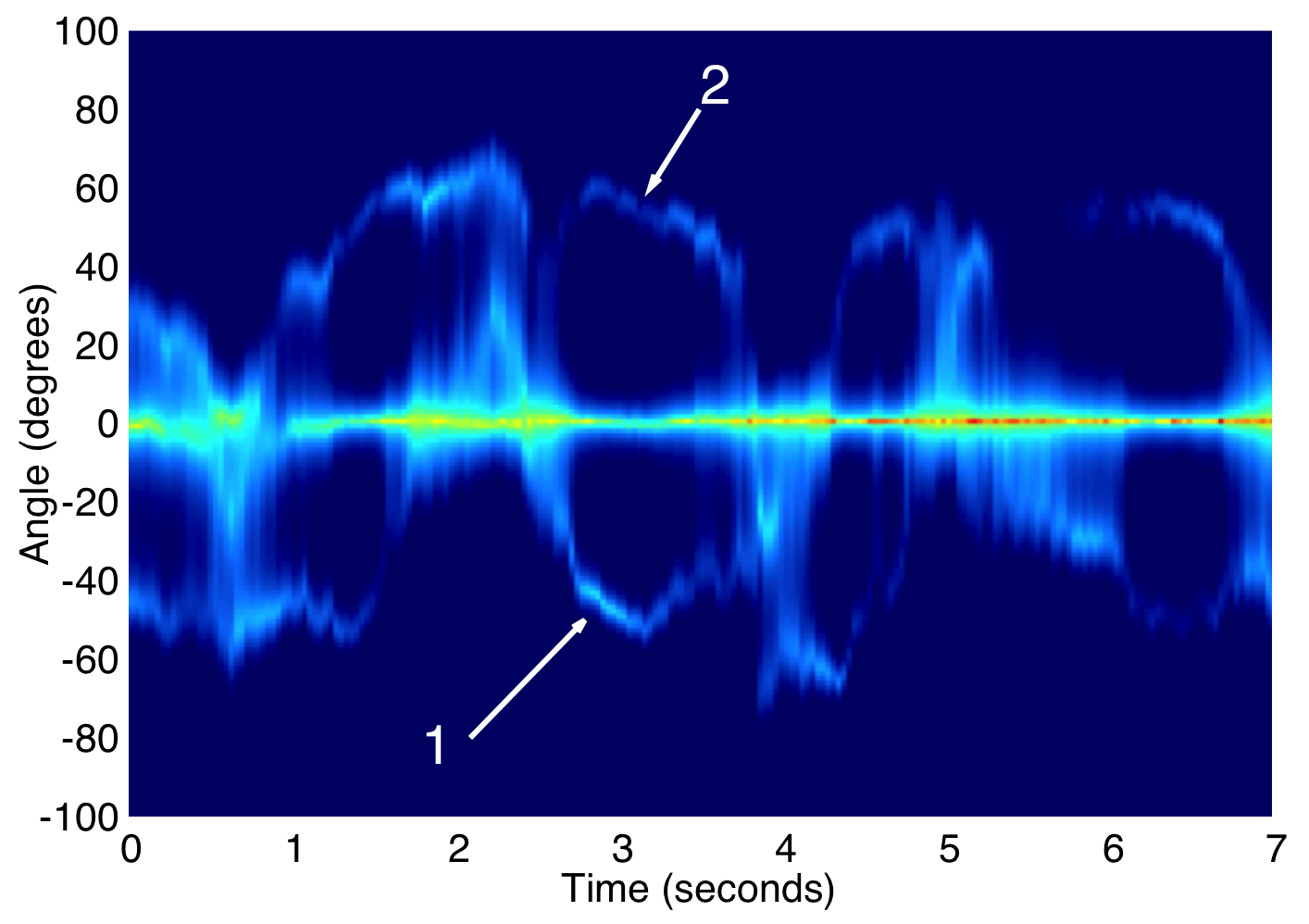 |
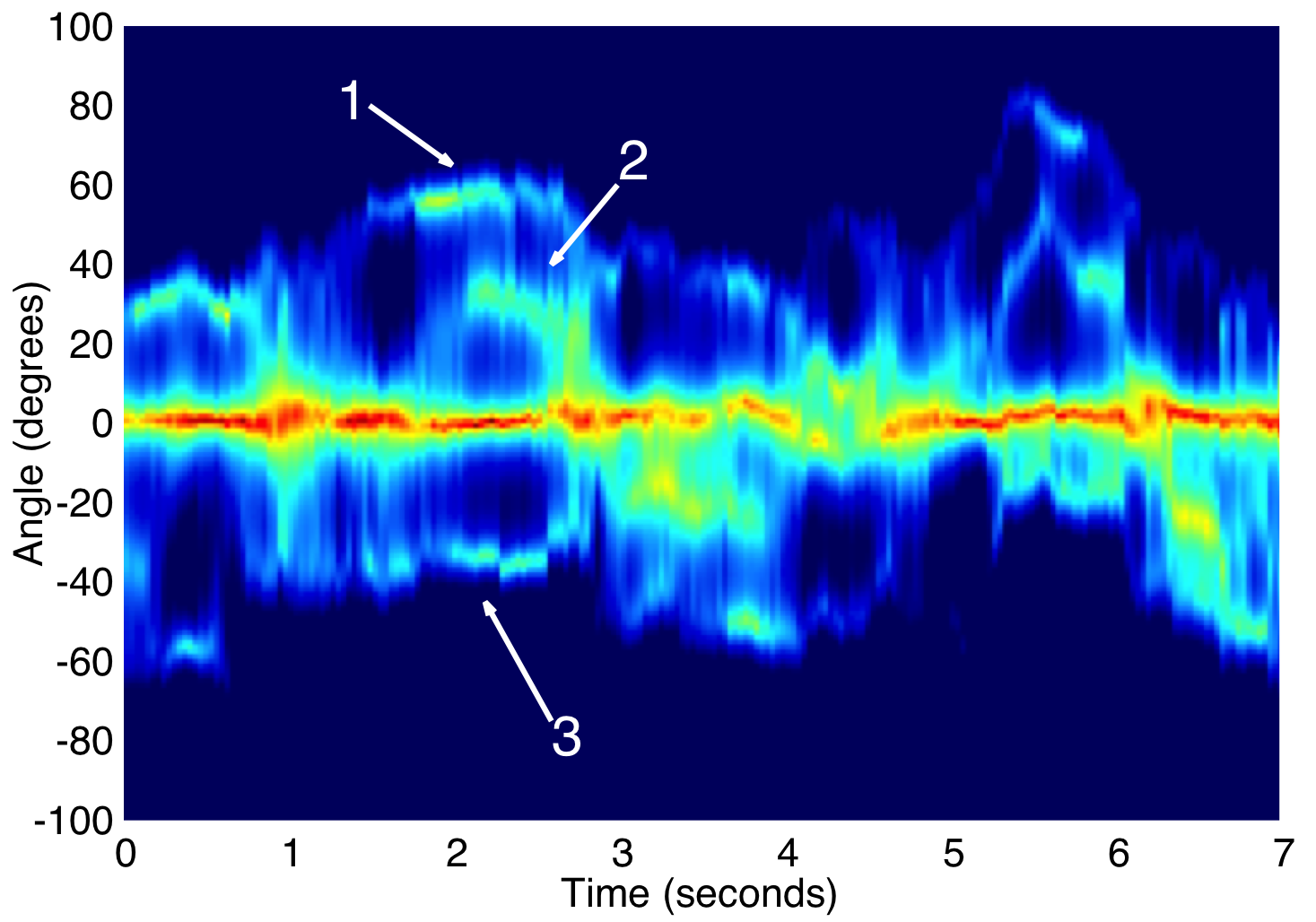 |
Automatically Detecting the Number of Moving ObjectsWi-Vi uses the fact that a person cannot be in more than one location at any given point in time to automatically detect the number of moving objects. This is the underlying intution behind a metric it uses called spatial variance to determine this number. The table below shows that Wi-Vi can detect with 100% accuracy the presence or absence of a moving human. The accuracy of the current version of Wi-Vi drops to 85% and 90% in detecting two and three persons respectively. |
|
|||||||||||||||||||||||||||||||||
Gesture Detection Accuracy
For a human to transmit a message to a computer wirelessly, she typically has to carry a wireless device. In contrast, Wi-Vi can enable a human who does not carry any wireless device to communicate commands or short messages to a receiver using simple gestures. Wi-Vi designates a pair of gestures as a '0' bit and a '1' bit. A human can compose these gestures to create messages that have different interpretations.The left and right figures below show the accuracy of Wi-Vi in decoding these gestures (bits) at different distances and through different building materials.
| Gesture Decoding with Distance | Gesture Decoding in Different Building Materials |
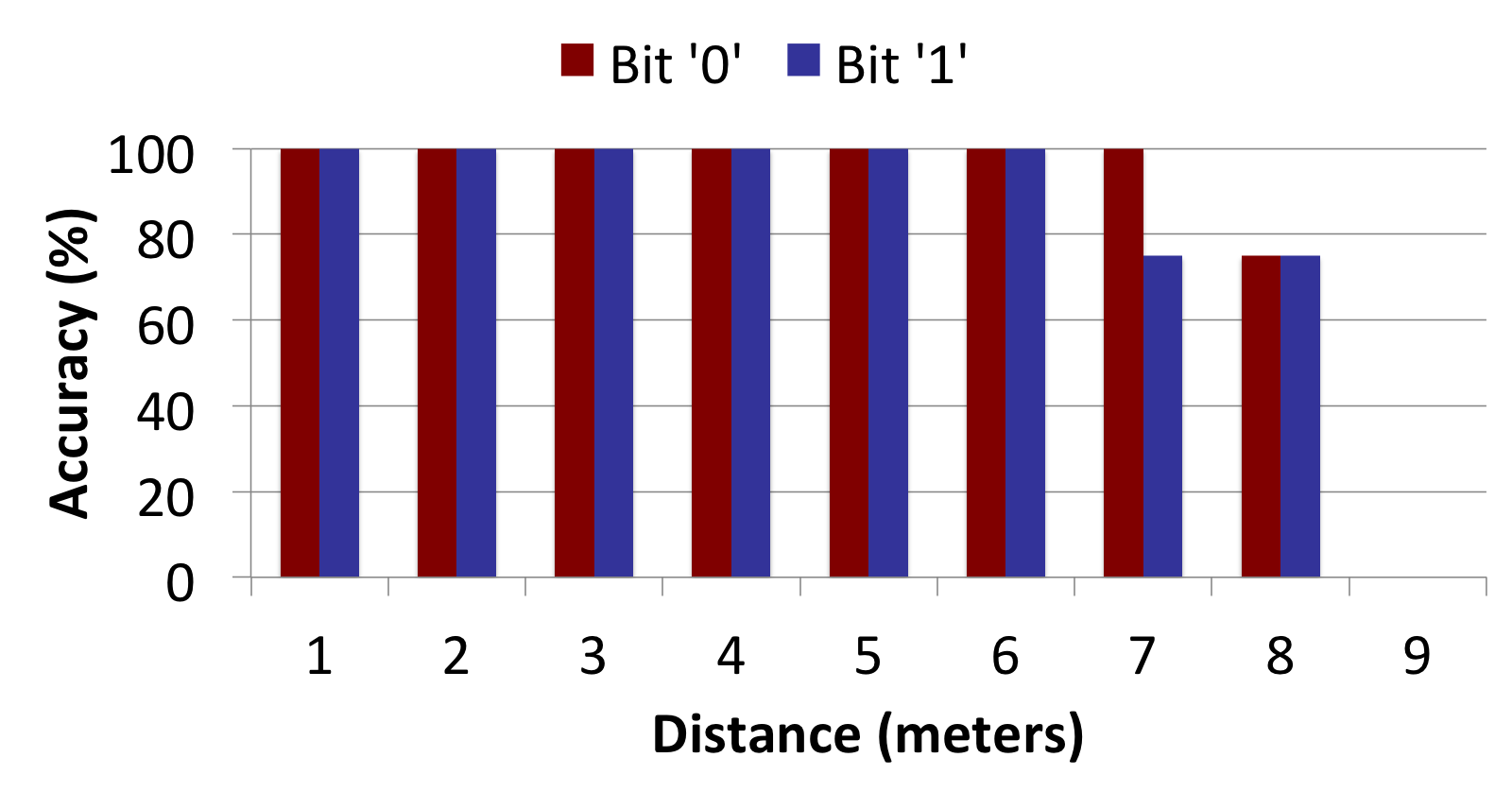
|
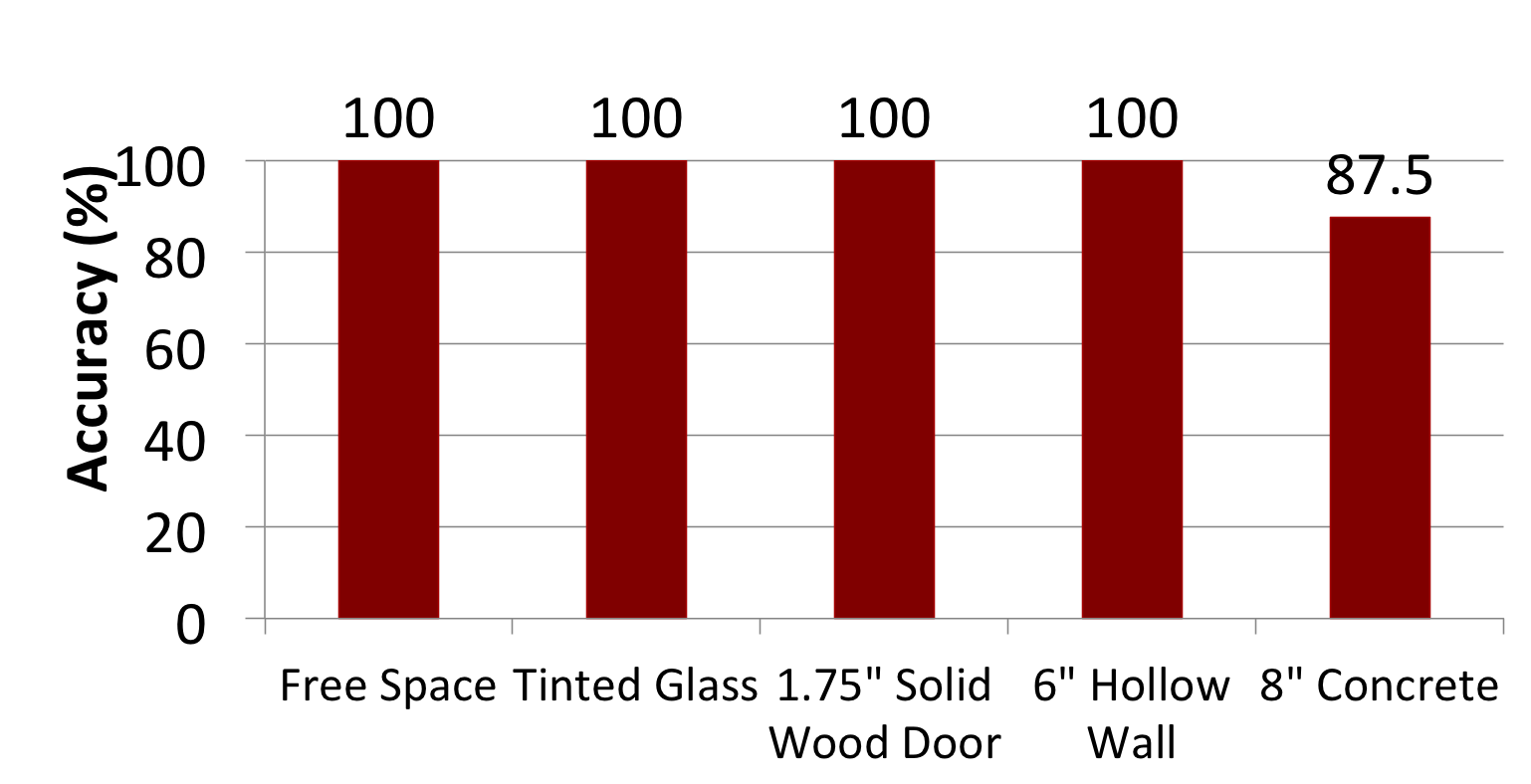
|
| © Massachusetts Institute of Technology |